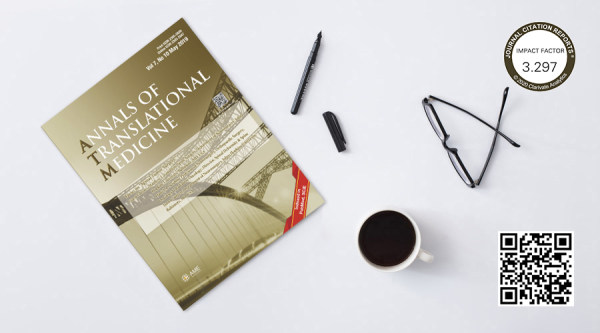
编者按: “AME 作者面对面” 是微信公众号 “AME科研时间” 的特色专栏。编辑部精心挑选了发表在 AME 旗下杂志的优秀论著,诚邀作者总结亮点,分享研究成果,旨在进一步推动医学同行之间的交流和进步。
分享团队:
中山眼科中心周建英,袁进团队
所刊杂志:
Annals of Translational Medicine(点击查看杂志详情与影响因子)
文章标题:
基于桌面式裸眼3D显示器实现一种快速的,准确的,多功能的和自助的视觉评估和筛查系统(Rapid, accurate, multifunctional and self-assisted vision assessment and screening with interactive desktop autostereoscopy)
内容亮点:
该研究基于指向背光式裸眼3D显示技术,建立一种交互式视觉评估与筛查系统,相比于传统视觉筛查,本系统集成了多项视功能筛查项目,包括视力、色觉、立体视觉及双眼平衡;同时充分利用裸眼 3D 显示的优势,实现了无遮盖筛查,既减少了传统视力筛查所用遮罩的浪费,又具有无接触、安全卫生的特点;筛查过程仅需交互工具(手机)便可完成所有测试,大大降低医护人员负担;测试结果实现云端数据化,便利了后期数据管理与统计分析,提高筛查效率。 临床上,裸眼 3D视觉筛查和 ETDRS 视力检查就测试可重复性、准确性、检查效率、患者可接受度、视觉疲劳方面进行比较。重复性测试,两次视力测试95%一致性界限为-0.14至0.09之间,色觉、立体视、双眼平衡与传统方案一致,表明本系统筛查的可重复性好;准确性测试, EDTRS图表与裸眼 3D视力筛查平均LogMAR视力值分别为0.04±0.02、0.05±0.02,无显著性差异(P=0.849),裸眼立体视测试、随机点 3S 立体式测试一致率为93.83%,表明裸眼3D视觉筛查准确度高;可接受度测试,裸眼 3D 视力筛查获得的得分为与传统视力检查的平均得分为3.04±0.07、2.21±0.53,P<0.001,色觉、立体视、双眼平衡裸眼 3D 视觉筛查获得的得分为与传统视觉检查的平均得分分别为3.36±0.93、 2.02±0.59,P<0.01,表明裸眼 3D视觉筛查作为一种新兴的筛查工具,普遍更受用户欢迎;视疲劳评估,裸眼 3D 视力筛查的平均得分为 0.42±0.04,传统视力检查得0.69±0.04, P<0.001,色觉、立体视、双眼平衡裸眼3D视觉筛查方案与传统视觉筛查方案得分分别为:1.51±0.50、3.95±0.30,P<0.01,表明裸眼 3D视觉筛查的疲劳度弱; 测试效率,裸眼 3D视力筛查和 ETDRS 视力检查平均耗时59.65±0.66 s、48.92±0.86 s,P<0.001,色觉、立体视、双眼平衡裸眼3D筛查方案与传统筛查方案时间分别为:251.36±97.74s、378.49±144.48s, P<0.001,表明裸眼 3D 视觉筛查效率高。 由此得出结论,裸眼3D视觉评估是一种可行的、高效的、更受用户欢迎的、多功能的、舒适度更高的裸眼视觉评估方案。
Abstract
Background: This study aimed to develop an interactive vision screening tool based on desktop autostereoscopy and evaluate its feasibility for testing visual acuity, colour vision, stereo vision and binocular balance clinically.
Methods: An interactive desktop autostereoscopy vision test was developed making it remarkably convenient for individuals to undergo multiple visual function assessments in a single test. With this rapid screening process, an individual’s visual acuity, colour vision, stereo vision and binocular balance can be assessed within several minutes. A total of 155 healthy subjects were enrolled to compare the clinical repeatability, accuracy, inter-visit variability, likeability and efficiency between the autostereoscopy and traditional method.
Results: In the repeatability test, the visual acuity measured with autostereoscopy was 0.045±0.018 and 0.035±0.018 (P=0.702) for the first and second tests, respectively. The mean logarithm of the Minimum Angle of Resolution (logMAR) visual acuities measured with the Early Treatment Diabetic Retinopathy Study (EDTRS) chart and autostereoscopy test were 0.04±0.02 and 0.05±0.02, respectively, which were not significantly different (P=0.849). The correlation between these two kinds of tests was statistically significant (Spearman correlation coefficient =0.829, P<0.001). The results for colour vision, stereo vision, and binocular vision are presented, and the effectiveness of the autostereoscopic method is supported with qualitative data comparing its results with those of the traditional methods. In the likeability test, the EDTRS chart and autostereoscopy test had scores of 2.21±0.53 and 3.04±0.07, while the traditional and autostereoscopy tests for colour vision, stereo vision, and binocular vision had scores of 2.02±0.59 and 3.36±0.93, respectively (P<0.001). Regarding visual fatigue, the mean scores were 0.69±0.04 and 0.42±0.04 (P<0.001) with the EDTRS chart and autostereoscopy test, respectively. Regarding work efficiency, the average testing times per person was 59.65±0.66 and 48.92±0.86 s (P<0.001) with the EDTRS chart and autostereoscopy test, respectively.
Conclusions: The autostereoscopy test was conclusively shown to be valid, efficient and repeatable for the measurement of visual acuity, colour vision, stereo vision, and binocular vision, and the process was subjectively well-liked and comfortable.
